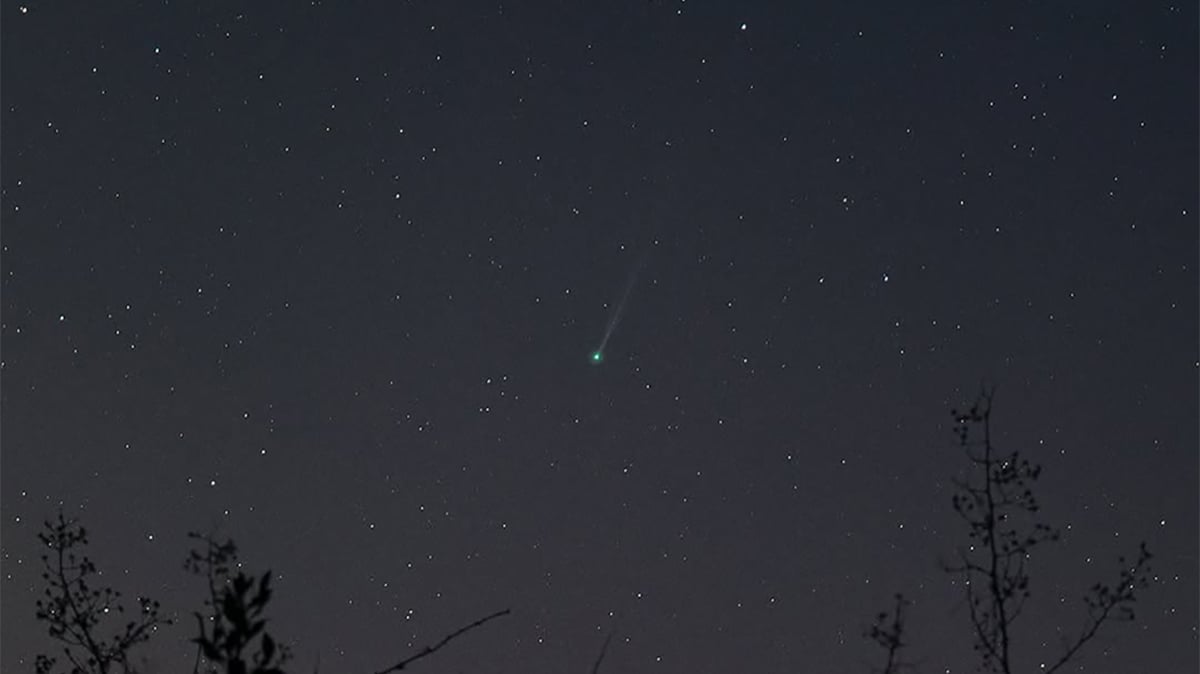
Comet C/2025 F2 (SWAN) has rapidly become a highlight in the skywatching calendar of 2025. Discovered in late March, this long-period comet is journeying towards the inner solar system and has already begun displaying a visible tail. For both amateur and professional astronomers, C/2025 F2 is an exciting opportunity to observe a rare celestial visitor that may become visible to the naked eye.
From the Outer Solar System to the Inner Sunlight
C/2025 F2 is a long-period comet likely originating in the distant Oort Cloud. Initial calculations suggest the comet’s original orbit extended thousands of astronomical units (AU) from the Sun. Its current trajectory brings it to a perihelion distance of just 0.33 AU, or about one-third the distance between Earth and the Sun.
According to BBC Sky at Night, the comet will reach its closest point to the Sun on May 1, 2025, putting it in a favorable position for increased outgassing and brightness. As it nears the Sun, heat will drive off gas and dust from the nucleus, creating the classic comet tail—sometimes even multiple tails—visible from Earth.
Brightness Forecast: Naked Eye or Not?
Comet brightness forecasts are notoriously unreliable due to the unpredictable nature of cometary activity. However, as of early April 2025, EarthSky.org and Space.com both report that C/2025 F2 (SWAN) has already brightened to magnitude 8.1 to 8.3. That places it firmly within binocular range and on track to potentially become a 5th magnitude object by mid-May.
If it continues to brighten at the current pace and its tail grows more prominent, it could briefly become visible to the naked eye under dark skies with minimal light pollution.
Where and When to Look
The comet is currently visible in the early morning sky, low on the east-northeastern horizon before dawn. In early April, it passed through the constellation Pegasus, moving into Andromeda. Notably, it passed near the bright star Alpheratz on April 13, making it easier to spot for amateur observers.
By mid-May, the comet’s position will shift closer to the Sun’s glare. Observers will need to watch for it during twilight or dawn, depending on the viewing angle and latitude. The best visibility for Northern Hemisphere observers will be from late April through mid-May, just before sunrise.
Telescopic and Photographic Prospects
For astrophotographers, Comet SWAN offers excellent opportunities to capture detailed images of its structure. Long exposures through wide-field telescopes or telephoto lenses can reveal the dust and ion tails, which may stretch several degrees across the sky.
Photographs from early April show a tail extending up to 2 degrees, indicating strong outgassing and a substantial coma. If it develops well-defined tail structures or fragmentation events near perihelion, it could make for some dramatic celestial portraits.
Scientific Value and Legacy
Comet C/2025 F2 is more than just a beautiful sky show. Long-period comets like this one offer a window into the primordial material from which the solar system formed. By analyzing its activity, astronomers can learn about the composition of early solar nebula dust and ice.
Unlike short-period comets that have been “cooked” by repeated solar encounters, long-period visitors are relatively unprocessed. Instruments on Earth and in space will be tracking its evolution, spectrum, and physical changes closely as it nears the Sun.
Observing Tips
If you’re planning to observe Comet C/2025 F2 (SWAN), here are some technical and practical suggestions:
- Use binoculars or a small telescope: Even if it brightens enough for naked-eye visibility, optical aid will provide better detail.
- Go to a dark-sky site: Rural areas with low light pollution offer the best chance of seeing the comet and its tail.
- Use a star chart or app: Tools like Stellarium or mobile apps will help you pinpoint the comet’s location relative to bright stars.
- Check regularly for updates: Comet brightness and visibility can change quickly. Reliable updates can be found on EarthSky.org, Space.com, and BBC Sky at Night Magazine.
Comet C/2025 F2 (SWAN) is shaping up to be one of the more promising comets in recent years. Its discovery via the SWAN instrument shows how valuable space-based solar monitoring missions are for comet science. As it continues its journey toward the Sun, we may get to witness a rare and memorable show in our sky—something no human has ever seen before and may not see again for tens of thousands of years.
So set your alarm clocks, pack your binoculars and cameras, and head out before dawn. If skies are clear and activity continues, C/2025 F2 might just become the comet of the year.
Clear skies!

